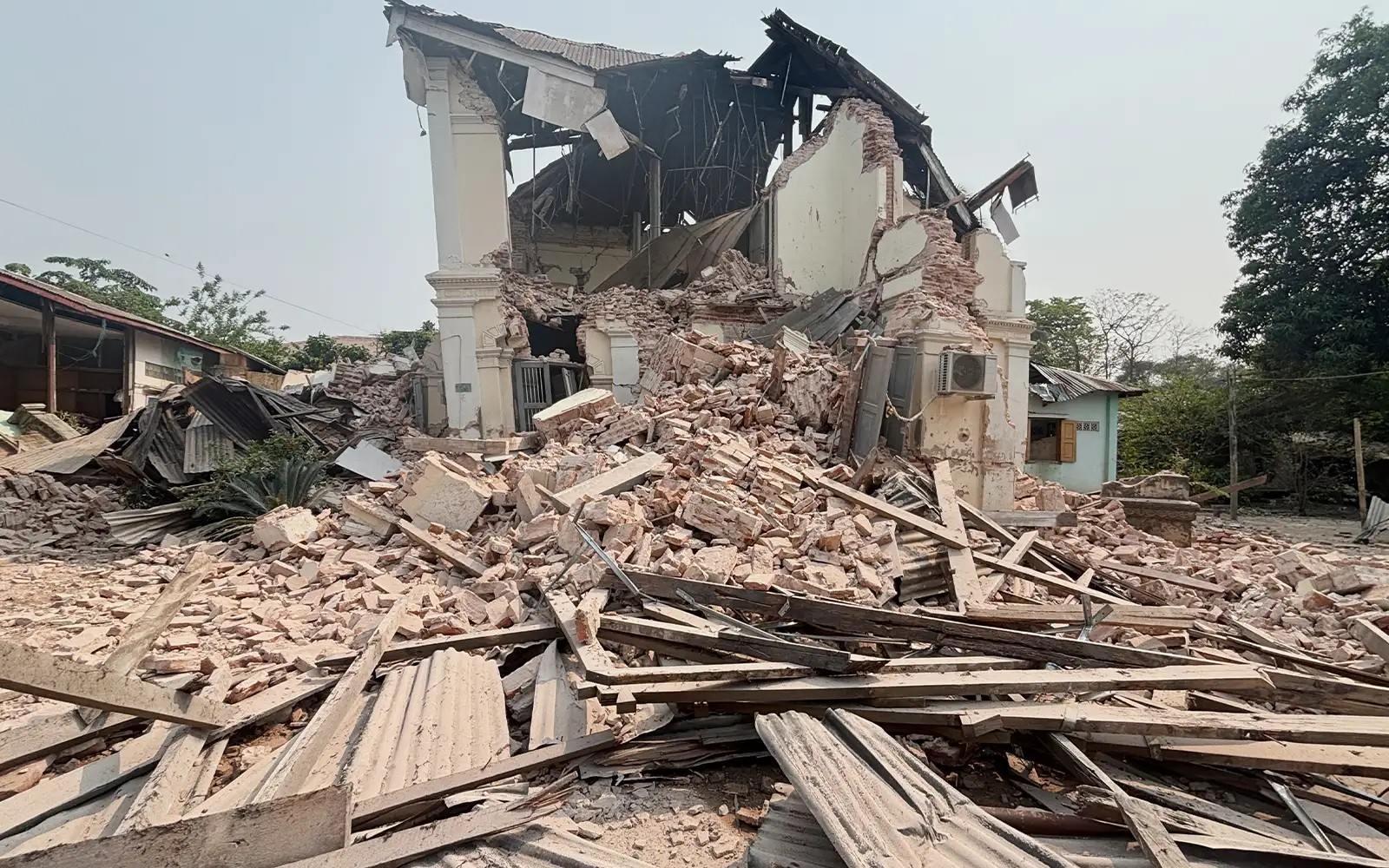
A 7.7-magnitude earthquake in Myanmar Friday was another sobering reminder of the importance of resilient infrastructure.
The earthquake’s epicenter was located just outside the city of Mandalay with deaths and damage throughout Myanmar and extending into neighboring China and Thailand. A high-rise building under construction in Bangkok collapsed.
The overall death toll from the quake rose above 1,600 over the weekend.
“As an engineer, I believe that people – especially property owners – need to be more aware of seismic design, especially in Mandalay, Myanmar,” said Su Su Nwal, Ph.D., Aff.M.ASCE, president of the ASCE Thailand Section.
“Myanmar sits in a highly earthquake-prone area. If owners have a solid understanding of seismic design, they may be more inclined to invest in the seismic safety of their buildings, and many people’s lives might be saved.”
Nwal lives in an eight-story apartment building in Pathum Thani, near Bangkok.
“When the earthquake started striking, at first I thought I was dizzy,” Nwal said. “Then, as soon as I realized it was an earthquake, I ran out from my building quickly. There was no damage to my building. No objects fell down in my room.
“But in Bangkok, many high-rise buildings reported some cracks and plaster falling.”
ASCE Region 10 Director April Lander was in Washington, D.C., this weekend at the ASCE Board of Direction meeting but stayed connected with Society leaders and partners in the region as best she could. She led a moment of silence for the victims during the meeting as well.
Soe Myint, former general secretary of the Federation of Myanmar Engineering Societies (or Fed. MES), checked in from Yangon, Myanmar, emailing: “All of us from the Fed. MES Yangon are safe and fine. We are trying to get more information about the damage and casualties.”
Fed. MES is one of 17 member societies in the Asian Civil Engineering Coordinating Council, which ASCE co-founded in 1999. ACECC issued a report summarizing the earthquake’s damage and the council’s role in the response. “From a seismic fragility perspective, Myanmar’s built environment is highly vulnerable due to a combination of seismic hazard, weak construction practices, and inadequate enforcement of building codes,” the report reads.
ACECC Secretary General Udai Singh, Ph.D., said he is scheduling a special session at the next ACECC executive committee meeting, to be held April 7-9 in Yangon, to determine ACECC’s next steps to help Myanmar in response to the earthquake.
“I have been working closely with Fed. MES,” Singh said. “A short-term step could be a reconnaissance survey by experts at various sites in Myanmar when access is available. Possibly, ACECC could bring in experts from some of its member societies and closely interact with technical experts, regulators, and decision-makers from Myanmar. The long-term steps will be determined from these and other short-term activities.”
Lander plans to represent ASCE at the ACECC executive committee meeting, traveling to Bangkok to visit with ASCE Thailand Section leaders along the way.
Section Secretary Zaw Zaw Aye, M.ASCE, was already busy looking into his technical expertise for answers to make Thailand more resilient.
“Why did Bangkok experience more impact than Yangon in the recent earthquake, despite being more than twice the distance from the epicenter?” Aye said.
“In short, Bangkok shakes more during earthquakes because of its thick, soft clay and deep sediment basin, which amplify and prolong the shaking.”
Meanwhile, Nwal said engineers from the Asian Institute of Technology were conducting an initial review of damaged structures and hoped she and fellow ASCE leaders could help soon in the short-term response, including support for the rehabilitation process.
“In the long term,” she said, “conducting seminars to enhance knowledge about seismic-resistant design would be beneficial.”
Learn more about how you can help.
Get the latest in seismic design and earthquake engineering research from a special free collection of journal articles in the ASCE Library.



